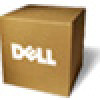Dell Vostro 1420 Owners Manual - Page 127
Error Messages
 |
View all Dell Vostro 1420 manuals
Add to My Manuals
Save this manual to your list of manuals |
Page 127 highlights
S C A N T H E C O M P U T E R F O R S P Y W A R E - If you are experiencing slow computer performance, you frequently receive pop-up advertisements, or you are having problems connecting to the Internet, your computer might be infected with spyware. Use an anti-virus program that includes anti-spyware protection (your program may require an upgrade) to scan the computer and remove spyware. For more information, go to support.dell.com and search for the keyword spyware. Error Messages Fill out the "Diagnostics Checklist" on page 200 as you complete these checks. CAUTION: Before you begin any of the procedures in this section, follow the safety instructions in the Product Information Guide. If the message is not listed, see the documentation for the operating system or the program that was running when the message appeared. AU X I L I A R Y DEVICE FAILURE - The touch pad or external mouse may be faulty. For an external mouse, check the cable connection. Enable the Pointing Device option in the system setup program (see "Using the System Setup Program" on page 213). If the problem persists, contact Dell (see "Contacting Dell" on page 201). BA D C O M M A N D O R FILE N A M E - Ensure that you have spelled the command correctly, put spaces in the proper place, and used the correct pathname. C A C H E D I S A B L E D D U E T O F A I L U R E - The primary cache internal to the microprocessor has failed. Contact Dell (see "Contacting Dell" on page 201). C D D R I V E C O N T R O L L E R F A I L U R E - The CD drive does not respond to commands from the computer (see "Drive Problems" on page 123). DATA ERROR - The hard drive cannot read the data (see "Drive Problems" on page 123). D E C R E A S I N G A V A I L A B L E M E M O R Y - One or more memory modules may be faulty or improperly seated. Reinstall the memory modules and, if necessary, replace them (see "Memory" on page 174). DI S K C : F A I L E D INITIALIZATION - The hard drive failed initialization. Run the hard drive tests in the Dell Diagnostics (see "Dell Diagnostics" on page 115). Troubleshooting 127















